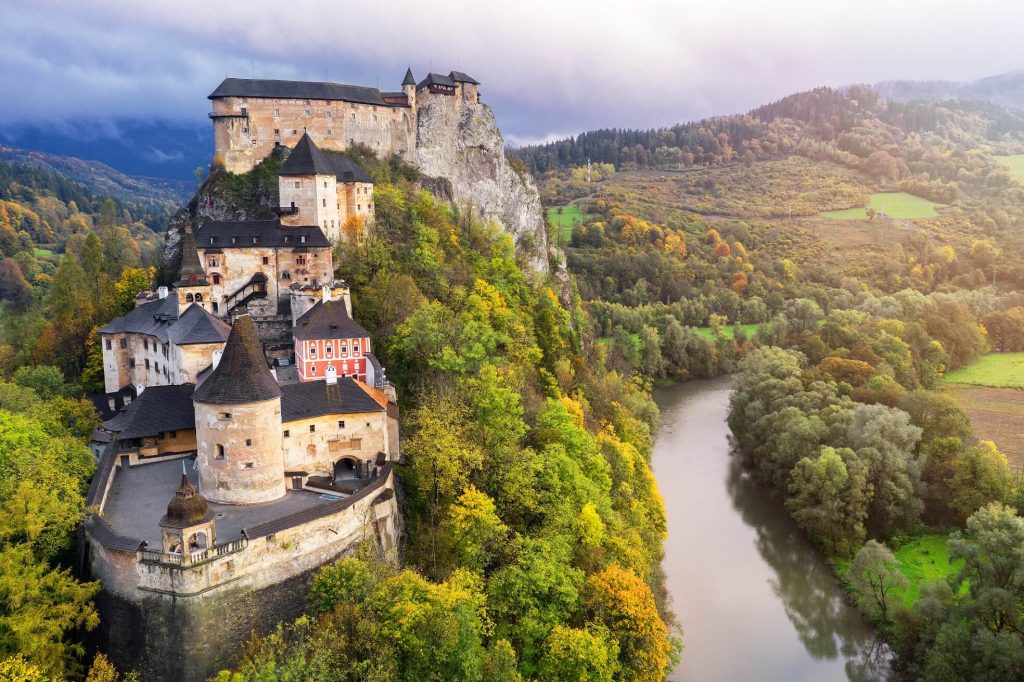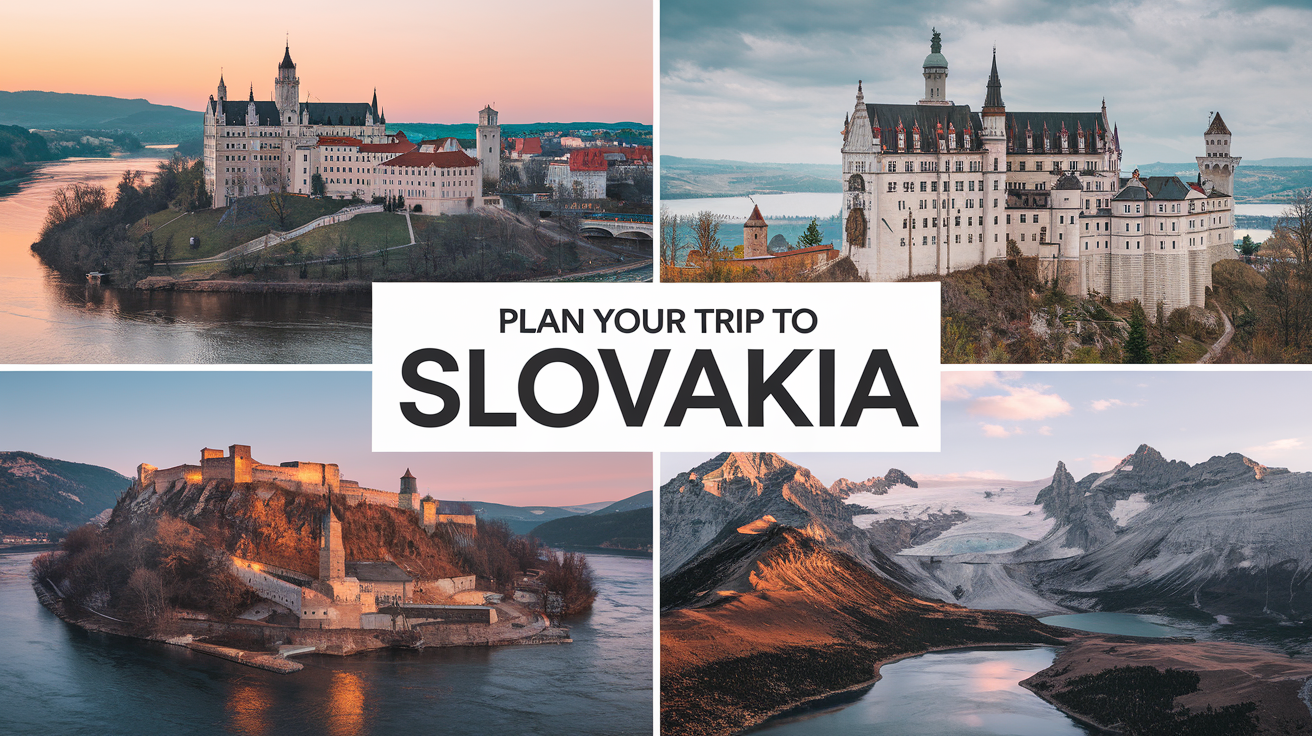
Nestled in the heart of Europe, Slovakia is a land of breathtaking natural beauty, rich history, and captivating culture. From its majestic mountain ranges and sprawling national parks to its charming medieval towns and imposing castles, this often-overlooked gem offers an unforgettable travel experience. Whether you’re an adventurer seeking to conquer rugged peaks, a history buff eager to explore ancient fortresses, or a culture enthusiast yearning for authentic experiences, Slovakia has something to enchant every traveler.
This comprehensive guide will equip you with all the essential information to plan your perfect trip to Slovakia, covering its top attractions, fascinating history, practical travel tips, diverse accommodation options, efficient transportation, and the ideal times to visit.
A Glimpse into Slovakia’s Rich Tapestry: History at a Glance

Related Articles about Slovakia: A Journey Through Castles, Mountains, and Hidden Gems:
- Cairo: A Symphony of Ancient Wonders and Modern Buzz
- Casablanca: A City of Contrasts, Charms, and Timeless Allure
- Toronto: A Mosaic of Culture, Commerce, and Charm – Your Ultimate Travel Guide
- Manchester: A Northern Powerhouse – Your Ultimate Travel Guide
- Kazakhstan: Unveiling the Heart of Central Asia
Slovakia’s history is a complex and captivating narrative, shaped by centuries of shifting borders, powerful empires, and resilient people. The region has been inhabited since prehistoric times, with evidence of early Slavic settlement dating back to the 5th century.
The Great Moravian Empire (9th century) was a significant early Slavic state that encompassed much of modern-day Slovakia and the Czech Republic. It played a crucial role in the spread of Christianity and the development of Slavic literacy, thanks to the Byzantine missionaries Saints Cyril and Methodius.
Following the decline of Great Moravia, the territory of Slovakia became part of the Kingdom of Hungary for nearly a millennium. This period saw the rise of numerous fortified castles and towns, many of which still stand today as testament to its strategic importance. The Hungarian rule brought influences in language, architecture, and administration.
The 20th century marked a period of profound change. After the collapse of the Austro-Hungarian Empire at the end of World War I, Slovakia became part of Czechoslovakia. This union, however, was short-lived during World War II, as Slovakia became a client state of Nazi Germany. After the war, Czechoslovakia was re-established but remained under Soviet influence during the Cold War.
The peaceful Velvet Revolution in 1989 led to the end of communist rule. In 1993, Czechoslovakia peacefully dissolved into two independent nations: the Czech Republic and Slovakia. Since then, Slovakia has emerged as a vibrant and modern European country, a proud member of the European Union and NATO.
Unveiling Slovakia’s Treasures: Top Attractions
Slovakia’s allure lies in its diverse landscapes and rich heritage. Here are some of its most captivating attractions:
1. Bratislava: The Charming Capital:
Slovakia’s capital, Bratislava, is a compact and picturesque city perched on the banks of the Danube River. Its pedestrian-friendly Old Town is a labyrinth of cobblestone streets, pastel-colored Baroque buildings, and lively squares.

- Bratislava Castle: Dominating the skyline, this iconic fortress offers panoramic views of the city and the Danube. Explore its historical exhibitions and soak in the atmosphere.
- St. Martin’s Cathedral: A former coronation church for Hungarian monarchs, this Gothic masterpiece is a significant historical landmark.
- UFO Observation Deck: For a modern perspective, ascend the unique UFO-shaped tower atop the SNP Bridge for breathtaking city vistas.
- Old Town Square & Michael’s Gate: Wander through the heart of the Old Town, admire the Old Town Hall, and pass through the imposing Michael’s Gate, the only preserved gate of the medieval city fortifications.
2. High Tatras: The Majestic Mountains:
The High Tatras, Slovakia’s most famous mountain range, are a paradise for hikers, climbers, and nature lovers. Their dramatic peaks, crystal-clear alpine lakes, and diverse flora and fauna are truly awe-inspiring.
- Štrbské Pleso: A glacial lake surrounded by stunning peaks, this is a popular starting point for hikes and offers boat rides.
- Lomnický štít: Reach the second highest peak via a cable car for unparalleled panoramic views of the Tatras.
- Hiking Trails: From gentle lakeside strolls to challenging ascents, the High Tatras offer a network of well-marked trails for all fitness levels.
- Winter Sports: During winter, the High Tatras transform into a premier destination for skiing and snowboarding.
3. Spiš Castle: A UNESCO World Heritage Gem:
One of the largest castle complexes in Central Europe, Spiš Castle is an awe-inspiring medieval fortress perched atop a rocky outcrop. Its sheer scale and dramatic setting make it a truly unforgettable sight.
- Explore the Ruins: Wander through the vast courtyards, ramparts, and chambers, imagining life within its walls centuries ago.
- Spišská Kapitula: Located nearby, this "ecclesiastical town" with its cathedral and bishop’s palace offers a fascinating glimpse into the religious history of the region.
4. Banská Štiavnica: The Enchanting Mining Town:
A UNESCO World Heritage site, Banská Štiavnica is a remarkably preserved former silver mining town nestled in the Štiavnica Mountains. Its steep cobblestone streets, colorful houses, and unique atmosphere transport you back in time.
- The Old Castle & New Castle: Explore these historic fortifications offering insights into the town’s mining past and defensive strategies.
- Calvary: Climb to the Baroque Calvary complex for stunning views and a spiritual experience.
- Mining Museum: Discover the intricate world of historical mining techniques and artifacts.
5. Slovak Paradise National Park (Slovenský raj): A Hiker’s Dream:
This national park is renowned for its dramatic gorges, waterfalls, ladders, and wooden walkways that allow you to traverse its rugged terrain. It’s a unique and adventurous hiking experience.
- Suchá Belá Gorge: A popular trail featuring numerous waterfalls and challenging ladder sections.
- Prielom Hornádu: Hike along the Hornád River, navigating narrow canyons with the help of chains and ladders.
- Dobšinská Ice Cave: One of the most significant ice caves in Europe, offering a cool respite and a dazzling display of ice formations.
6. Bardejov: A Medieval Masterpiece:
Another UNESCO World Heritage site, Bardejov is a beautifully preserved medieval town in eastern Slovakia, known for its well-preserved town walls, Gothic churches, and the magnificent Town Hall.
- Town Square: The heart of Bardejov, this square is lined with colorful burgher houses and dominated by the Basilica of St. Egidius.
- Town Walls: Walk along the intact medieval fortifications for a sense of the town’s historical defenses.
7. Vlkolínec: A Living Folk Architecture Museum:
This picturesque village, a UNESCO World Heritage site, is a remarkably intact example of a traditional Central European village. Its colorful wooden houses and cobblestone paths offer a glimpse into rural Slovak life.
Practical Travel Tips for Slovakia
- Currency: The official currency is the Euro (€).
- Language: Slovak is the official language. English is widely understood in tourist areas, hotels, and by younger generations, but learning a few basic Slovak phrases will be appreciated.
- Visa: Slovakia is a Schengen Area member. Citizens of many countries can enter visa-free for up to 90 days within a 180-day period. Check specific visa requirements for your nationality.
- Electricity: The standard voltage is 230V, and the frequency is 50Hz. Plugs are Type F (Schuko).
- Tipping: Tipping is customary in restaurants and for services. Rounding up the bill or leaving 5-10% for good service is appreciated.
- Safety: Slovakia is a safe country with a low crime rate. Exercise standard precautions as you would in any urban environment.
- Connectivity: Wi-Fi is widely available in hotels, cafes, and public spaces. Consider purchasing a local SIM card for easier data access.
- Etiquette: Slovaks are generally polite and value punctuality. When visiting someone’s home, it’s polite to bring a small gift.
Finding Your Perfect Abode: Accommodation Options
Slovakia offers a diverse range of accommodation to suit every budget and travel style:
- Hotels: From luxury establishments in Bratislava to charming boutique hotels in historic towns and functional hotels in smaller cities, you’ll find a wide selection.
- Guesthouses (Penzióny): These are often family-run establishments offering a more intimate and personal experience, especially in rural areas and mountain resorts.
- Apartments & Holiday Homes: Ideal for families or longer stays, renting an apartment or a holiday home provides flexibility and self-catering options. Platforms like Airbnb are popular.
- Hostels: A budget-friendly option, particularly in larger cities like Bratislava, offering dormitory beds and private rooms.
- Mountain Huts (Chaty): For the adventurous, staying in mountain huts in the High Tatras or other national parks offers a unique and immersive nature experience. These can range from basic to more comfortable.
- Rural Cottages & Chalets: Experience authentic Slovak life by renting a traditional cottage in a village, often offering a peaceful retreat.
Navigating the Nation: Transportation in Slovakia
Slovakia boasts a well-developed transportation network, making it easy to explore the country:
- By Air: The main international airport is Bratislava Airport (BTS). Košice International Airport (KSC) also handles some international flights.
- By Train: The Slovak railway system (ŽSSK) is efficient and connects most major towns and cities. Trains are a comfortable and scenic way to travel between destinations. Consider purchasing a Slovak Rail Plus Card for potential discounts if you plan extensive train travel.
- By Bus: Buses are a popular and often more frequent option for reaching smaller towns and villages not served by trains. Companies like FlixBus operate international and domestic routes.
- By Car: Renting a car offers the most flexibility, especially for exploring remote areas and national parks. Roads are generally well-maintained. Note: A vignette (toll sticker) is required for using highways and expressways. You can purchase these online or at border crossings and petrol stations.
- Within Cities: Public transport in cities typically includes trams, buses, and trolleybuses. Bratislava also has a metro system under development. Walking is the best way to explore historic city centers.
Embracing the Seasons: Best Time to Visit Slovakia
The best time to visit Slovakia depends on your interests:
- Spring (April-May): The landscape bursts into bloom, and temperatures are pleasant for exploring cities and hiking in lower altitudes. Expect some rain.
- Summer (June-August): This is the peak tourist season. The weather is warm and ideal for outdoor activities, hiking in the mountains, and enjoying lakes. It can be crowded in popular spots.
- Autumn (September-October): Autumn offers stunning fall foliage, making it a beautiful time for scenic drives and hiking. Temperatures are cooler, and crowds begin to thin.
- Winter (November-March): Slovakia transforms into a winter wonderland, especially in the High Tatras, which are popular for skiing and snowboarding. Cities are adorned with festive decorations, and Christmas markets are a highlight. Be prepared for cold temperatures and snow.
In conclusion, Slovakia is a destination that rewards the curious traveler with its blend of natural splendor, historical depth, and authentic charm. From the grandeur of its castles to the serenity of its mountains and the warmth of its people, a journey to Slovakia promises an enriching and unforgettable experience. So pack your bags, embrace the adventure, and prepare to be captivated by this hidden gem of Central Europe.





